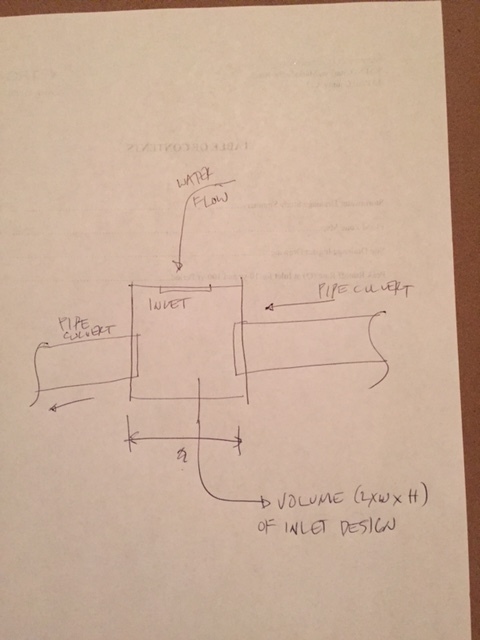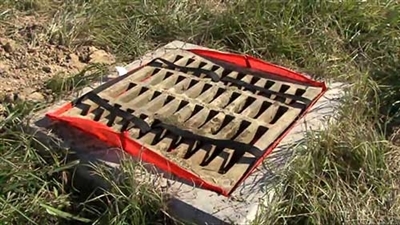Navigation
Install the app
How to install the app on iOS
Follow along with the video below to see how to install our site as a web app on your home screen.
Note: This feature may not be available in some browsers.
More options
Style variation
-
Congratulations MintJulep on being selected by the Eng-Tips community for having the most helpful posts in the forums last week. Way to Go!
You are using an out of date browser. It may not display this or other websites correctly.
You should upgrade or use an alternative browser.
You should upgrade or use an alternative browser.
does storm inlet have Q discharge capacity? 2
- Thread starter delagina
- Start date
- Status
- Not open for further replies.
- Thread starter
- #21
@cvg,
can you link me to inlet volume capacity (LxWxH) design.
Not the inlet grate opening which i have already calculated using hydraflow.
I can also calculate the pipe culvert diameter.
Unfortunately, civil 3d hydraflow does not calculate the inlet volume/area.
I have not looked into civil 3d storm sewer design.
Do I even need to calculate it. I think the volume/area of inlet is bigger than the volume/area of pipe culvert outfall?

can you link me to inlet volume capacity (LxWxH) design.
Not the inlet grate opening which i have already calculated using hydraflow.
I can also calculate the pipe culvert diameter.
Unfortunately, civil 3d hydraflow does not calculate the inlet volume/area.
I have not looked into civil 3d storm sewer design.
Do I even need to calculate it. I think the volume/area of inlet is bigger than the volume/area of pipe culvert outfall?

Your structure has to be big enough to fit the holes they cut for the pipes. Attenuation volume in simple junction boxes is almost always neglected.
Hydrology, Drainage Analysis, Flood Studies, and Complex Stormwater Litigation for Atlanta and the South East -
Hydrology, Drainage Analysis, Flood Studies, and Complex Stormwater Litigation for Atlanta and the South East -
3' wide x 3' long x 4' high
a typical storm drain inlet structure has a volume of maybe 30 or 40 cubic feet (up to the top of the pipe) and at 2 cfs, that would be completely full in say 15 seconds at peak flow. Once it is full, there is no attenuation of flow. Some software such as stormnet and SWMM do allow you to enter volume of inlets and manholes. But frankly, it is a waste of time for analysis of peak storm flow.
If you really want to get crazy, than calculate the storage capacity of your pipes as well and include that in your routing also.
a typical storm drain inlet structure has a volume of maybe 30 or 40 cubic feet (up to the top of the pipe) and at 2 cfs, that would be completely full in say 15 seconds at peak flow. Once it is full, there is no attenuation of flow. Some software such as stormnet and SWMM do allow you to enter volume of inlets and manholes. But frankly, it is a waste of time for analysis of peak storm flow.
If you really want to get crazy, than calculate the storage capacity of your pipes as well and include that in your routing also.
Yes. That inlet has Q discharge.
How much Q discharge do you need? How are you figuring it?
What is the maximum depth of flooding that is acceptable?
Take that depth, and use it to drive the Q through the opening with the orifice equation. Then halve it (blockage). There's how much Q that inlet can take before you start to flood.
For instance, assuming those openings are (WAG) 1"x6" (times 40 openings) with 1' of head... drumroll... the Q discharge that inlet has is 8 cfs. Woops! It's clogged, use 4 cfs.
How much Q discharge do you need? How are you figuring it?
What is the maximum depth of flooding that is acceptable?
Take that depth, and use it to drive the Q through the opening with the orifice equation. Then halve it (blockage). There's how much Q that inlet can take before you start to flood.
For instance, assuming those openings are (WAG) 1"x6" (times 40 openings) with 1' of head... drumroll... the Q discharge that inlet has is 8 cfs. Woops! It's clogged, use 4 cfs.
The inlet capacity increases with the Head above it (depth of ponding water), assuming it is located in a sump.
I normally use Hydrualic Toolbox.
Now, when you have a Q and want to see if your Inlet can handle it, just enter the maximum allowable ponding depth (Head) at the inlet and determine the Q(inlet). If the Q(inlet) is greater than your Q from drainage area, you are ok. If not, resize the inlet opening. Just like Spartan5 suggested, I would follow that method.
I normally use Hydrualic Toolbox.
Now, when you have a Q and want to see if your Inlet can handle it, just enter the maximum allowable ponding depth (Head) at the inlet and determine the Q(inlet). If the Q(inlet) is greater than your Q from drainage area, you are ok. If not, resize the inlet opening. Just like Spartan5 suggested, I would follow that method.
- Status
- Not open for further replies.
Similar threads
- Question
- Replies
- 1
- Views
- 2K
- Question
- Replies
- 2
- Views
- 867
- Locked
- Question
- Replies
- 3
- Views
- 780
- Locked
- Question
- Replies
- 19
- Views
- 1K
- Locked
- Question
- Replies
- 2
- Views
- 439

